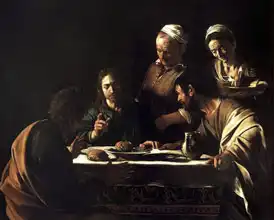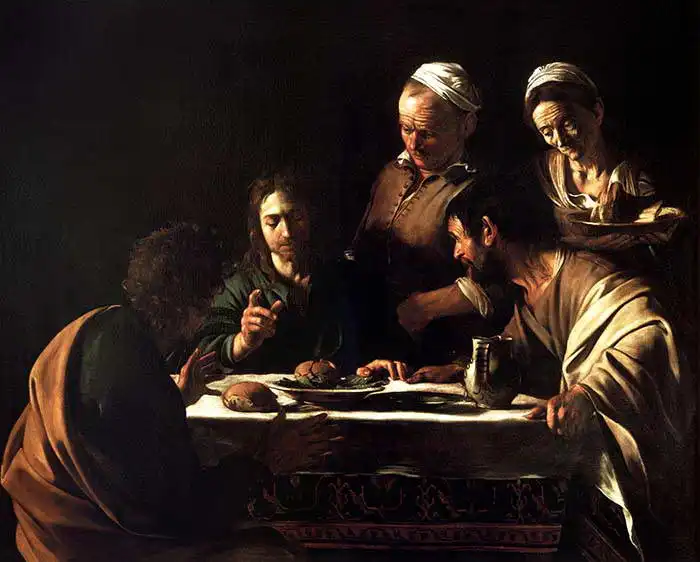About this finishing
Print. The image is printed on the top quality 10-ink HP Z9PS printer on HP matte 270 g / m2 paper. You can choose any size to an accuracy of 1 cm. A margin of 5 cm around the image is added to the size of the motif.


You can find a detailed description about our finishings
here.
Supper at Emmaus
Date:
1606Location:
Pinacoteca di Brera, Milan, ItalyDimensions:
141 x 175"Supper at Emmaus" (Supper at Emmaus) is actually the work of the Italian
Baroque painter Caravaggio, named
Michelangelo Merisi da Caravaggio .
"The Supper at Emmaus" is a
religious painting from 1601 that depicts the biblical moment of Jesus meeting two of his disciples on the way to the village of Emmaus.
In the painting you can see a scene where Jesus, after his resurrection, sits down to dinner with two disciples. Jesus is shown in the background and with him is a hot bread. Illuminatingly, one of the disciples still does not know who he is, while the other disciple points to Jesus with a hint of knowledge.
Caravaggio used light and shadow to create a dramatic effect. The dark background emphasizes the illuminated figure of Jesus and the bread on the table, which draws the viewer's attention. Caravaggio was known for his ability to capture dramatic moments and convey emotion through light and shadow.
Caravaggio painted picture Supper at Emmaus in 1606. Prevailing color of this fine art print is dark and its shape is landscape. Original size is 141 x 175. This art piece is located in Pinacoteca di Brera, Milan, Italy. This image is printed on demand - you can choose material, size and finishing.
Caravaggio (Merisi Michalengelo) (1571-1610). Italian
Baroque painter, who in his short life was significantly influenced by Baroque painting. Born to a family of architects in Caravaggio, he was an unwary adventurer who liked teasing and toying with fate. In his early works, he preferred
realism. He worked with light and shadow, combining natural and architectural elements. He captured dramatic scenes (and his images are very sensational) by utilising hyperrealism and an impressive use of light and shadow. An intense light side, which he started using, helped him add intensity to colours and link the composition into one unit. Light, intense colours, and choice of motifs (often with the presence of death) are the cornerstones of his work, which indelibly influenced the history of art.


